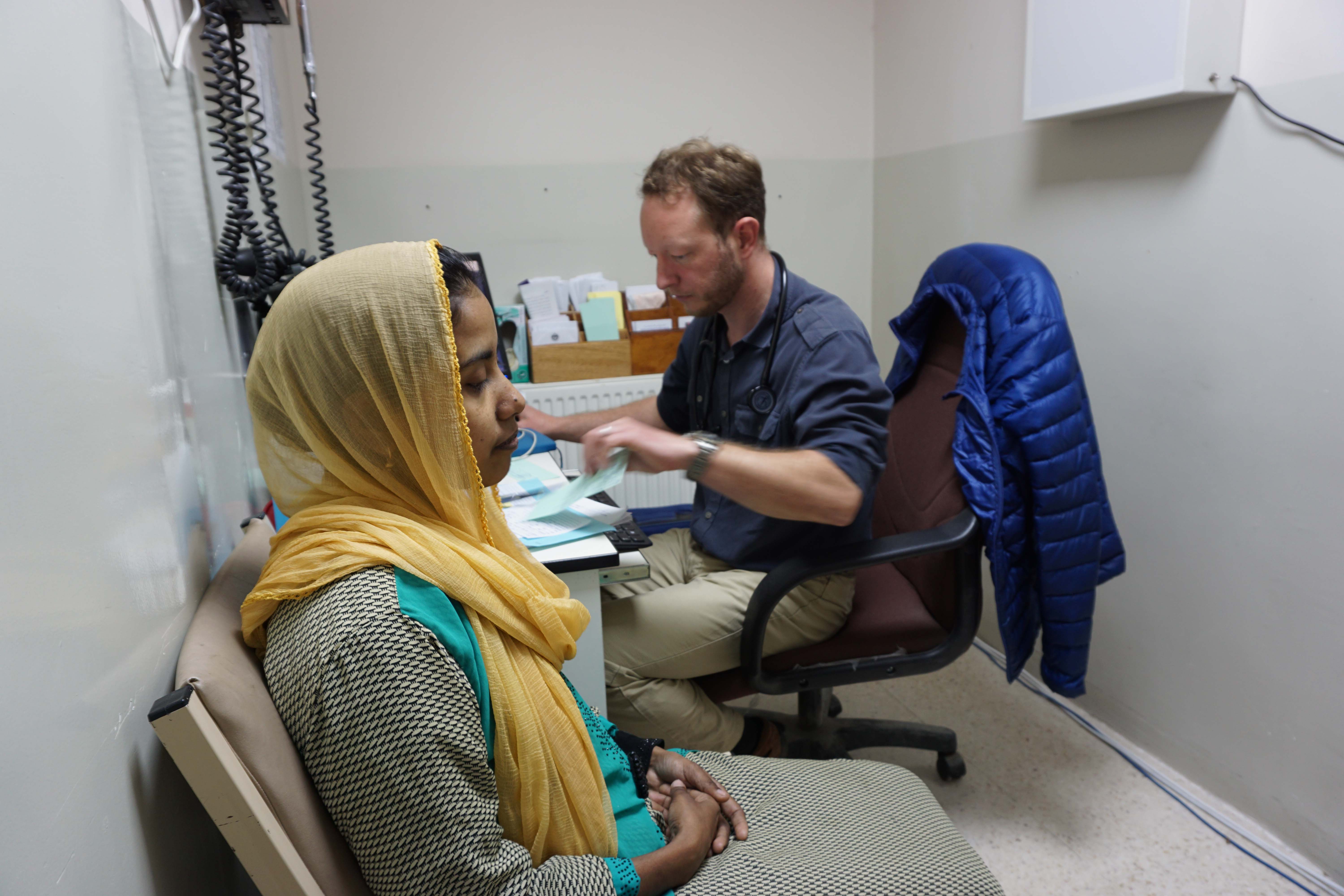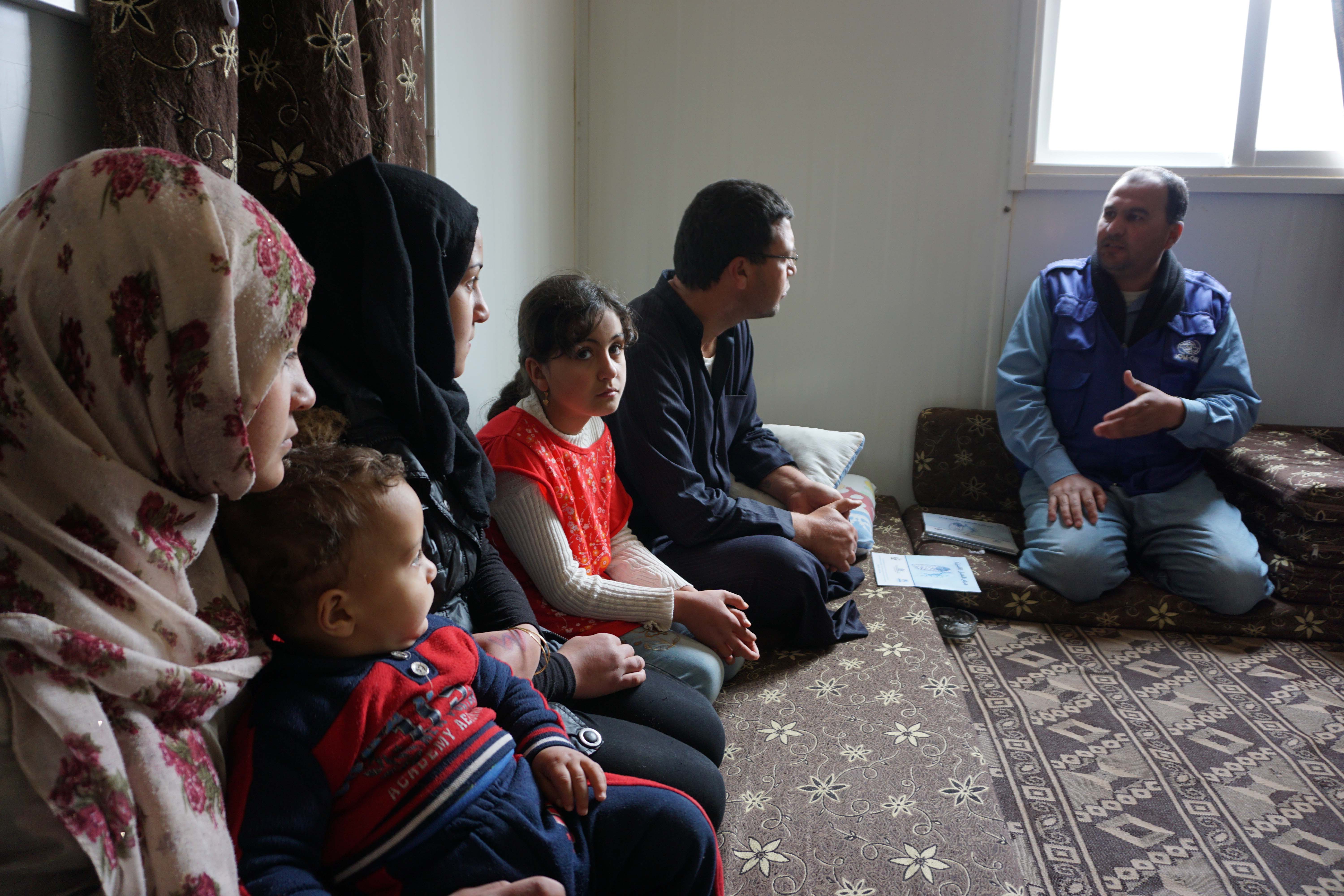-
Who We Are
WHO WE ARE
The International Organization for Migration (IOM) is part of the United Nations System as the leading inter-governmental organization promoting humane and orderly migration for the benefit of all. IOM has had a presence in Jordan since 1994.
About
About
IOM Global
IOM Global
-
OUR WORK
Our WorkAs the leading inter-governmental organization promoting since 1951 humane and orderly migration, IOM plays a key role to support the achievement of the 2030 Agenda through different areas of intervention that connect both humanitarian assistance and sustainable development. Across Jordan, IOM provides specific services to the Jordanian government to manage the migratory flows.
Cross-cutting (Global)
Cross-cutting (Global)
- Data and Resources
- Take Action
- 2030 Agenda
World Tuberculosis Day 2017 - Programs for refugees and migrants in Jordan
Refugees and migrants are groups in high risk of marginalization. At the same time, and because of various social reasons, tuberculosis (TB) is a disease often associated with poverty, marginalization and even death. As a consequence, activities related to TB that target these two vulnerable groups need a sensitive approach to this health issue and merits critical attention to confidentiality of the patients in order to reduce the social stigma and discrimination associated with TB.“A woman told me that her husband wanted to divorce her after discovering she has TB. A Bedouin man we are currently treating told us that we have destroyed his reputation by bringing him to the TB clinic. We have to maintain strict confidentiality in diagnosing and treating the patient, while we have to screen patient's household and their neighbourhood or community too to find out TB contacts. It is a very difficult balance” says Dr. Jeremy Fowler, Medical Director of the Annoor Sanatorium, a TB care facility, and a partner of IOM in the TB program.
The campaigns implemented to raise awareness among refugees, migrants and host communities should address indirectly the social aspects of TB to avoid any negative impacts into patients and vulnerable groups. To do that, IOM´s awareness campaigns in Jordan focus on spreading practical information and help to identify and refer the cases; also, they promote good practices and positive information about TB, like the importance of early diagnosis and the high rate of recovery of patients when the treatment is followed adequately. Ammar, IOM’s Community Health Worker in Zaatari refugee camp, was under treatment of TB himself, and now fully cured of TB, helping to raise awareness among other refugees inside the camp. He told us that people get scared when they hear the word tuberculosis because that is often associated with death: “Many people still believe that TB cannot be treated. I always share with them my personal experience on how I have completed the long treatment and cured of TB completely.”
A key message delivered to the host communities is that the higher prevalence of TB in refugees and migrants is related mostly to external circumstances but to a lesser extend to personal behaviours.For example, before the crisis, the TB national program in Syria managed to reduce the incidence of TB to 17/100,000 in 2011, but with the upsurge of the crisis in 2011 the living conditions deteriorated and the access to health services was reduced. Also psychosocial conditions might affect negatively the immune system. At the moment of their arrival in Jordan, many Syrian refugees have already live in deteriorated environments for months, with low access to health care and suffering traumatic situations. They were at risk of developing TB andspreading TB toothers.
When it comes to migrants, the pre-departure protocols followed by the country of origin and by Jordan as a country of destination reduce to a very low level the risk of travelling with TB. The most of the migrants develop the disease once in Jordan, due to poor living and workingconditions, and lack of access to proper medical services. In such cases, the awareness program target both employers and employees.
Refugees and migrants in Jordan are people on the move. The TB treatment requires stability, close follow-up by nurses and doctors, psychosocial support and complementary diets for the application of the Directly Observed Therapy (DOT). Because of their particular situation, external circumstances often encourage or force the patient to leave Jordan before completion of the treatment. Refugees and migrants often decide to return to the country of origin or are confronted to the opportunity of travelling to a third destination. Insuch cases, IOM applies special protocols and makes arrangements to ensure that the patient follows the treatment in the new destination.Although patients are informed of the consequences of interrupting the treatment, and the risk of developing Multi Drug Resistant (MDR) TB, the application of DOT is fundamental to ensure that the patient is taking all drugs on time. “A normal TB treatment takes 2-3 months of intensive treatment with 4 different drugs, and 4-5 months under two drugs. To recover from MDR TB, the patient will have to follow a two years treatment, with 7-8 months of intensive treatment in in-patient facility.” says Hani Halaseh, IOM staff working as a nurse in the TB program since 2013. IOM teams visit the patients at home to ensure DOT and in case of need, IOM covers the cost of transportation of the patient to the clinics.
Awareness focus on the fact that TB programs benefit refugees, migrants and host communities alike and require the involvement of all. In Jordan, IOM works with refugees informally settled outside of the camps, in isolated rural areas considered as hard to reach. The existence of awareness among the community is fundamental to detect and refer TB cases. Accessing health facilities from hard to reach areas is always a challenge; IOM, therefore, brings some TB screening tools like mobile X-raytothe hard to reach community.
The response to the Syria crisis in Jordan is a precised framework in which IOM coordinates with different actors: UN agencies with a mandate over refugees or health issues such as UNHCR and WHO; governmental bodies such as the Ministry of Health and the municipalities and governorates; NGOs dealing with refugees and migrants; representatives of the communities and focal agents with capacity to detect TB cases. Especially critical it is the role of the Jordan National Tuberculosis Program that covers all the population in the country, national and foreigners.IOM provides technical and operational support to the national program to enhance the national capacity and to support the government in alignment with the Sustainable Development Goals. The involvement of the donor community is fundamental in burden sharing. The Global Fund to Fight Aids, Tuberculosis and Malaria has been supporting IOM efforts since January 2015. Through the GF grant, with the help of community health workers, primary health care facilities, local NGOs and IOM mobile teams, under guidance of the National Tuberculosis Program, the project aims to raise awareness on TB, to carry out screening and detection activities of suspected TB cases and ensure the Directly Observed Therapy (DOT) for TB patients.


For more information contact:
Laura Sisniega Crespo, Communications Officer: lsisniegacrespo@iom.int
Dr. Saiful Qayyum, Public Health Coordinator: sqayyum@iom.int
